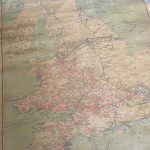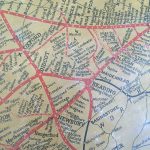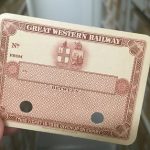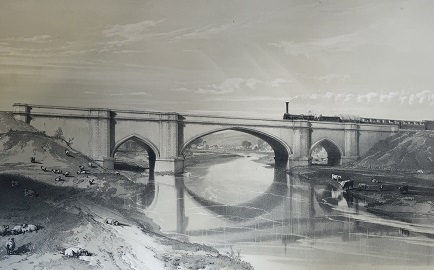Written by Louise Cowan, Trainee Liaison Librarian
The Great Western Railway (GWR) was founded in 1833 and received an enabling Act of Parliament in August 1835 that allowed the company to provide a double tracked line from Bristol to London (Daniel, 2013).
Five years ago, no man had ever travelled from London to Bristol, even by the mail in much less than twelve hours; upon the opening of the railway the distance was performed in four hours
(Bourne, 1846)
Isambard Kingdom Brunel was appointed as the project’s engineer, determining the route, sections and estimates (Bailey, 2006). He also designed a controversial broad gauge track in an effort to increase speeds and passenger comfort (Daniels, 2013).
Construction of the line finally began in 1836; initial stages saw work being completed between Bristol and Bath in the West, and Reading and London in the East with connecting lines and stations quickly following. (Daniels, 2013). Upon completion in 1841, the GWR was considered such an outstanding achievement that it was dubbed ‘God’s Wonderful Railway’ by many (Trueman, 2016) and in 1846 John C. Bourne published “The History and Description of the Great Western Railway” with the express purpose of highlighting, the “constructive skill and general grandeur of appearance,” of the project.
Bourne’s work is a fascinating insight into an exciting period in the history of transport and travel; it gives a brief history of the political and economical challenges faced by the GWR, an overview of the scientific and engineering principles involved in the construction of railways and locomotives, and then presents an array of beautiful lithographs highlighting the remarkable construction and architectural work found along the tracks.
but the straightness of a railway, and the rapidity of the motion upon it, entirely shut out its far greater and more numerous works, and thus some of the most magnificent structures in the kingdom, though crossed daily by thousands, are actually seen by few.
(Bourne, 1846)
Highlights from among the lithographs include:
An early Paddington Station, the London terminus of the railway designed by Isambard Kingdom Brunel.
The railway leaves Paddington in cutting, but the Kensal-Green Cemetery, with its glittering temple, is seen on the right, and on the left an occasional view of the Vale of the Thames.
(Bourne, 1846)
The Wharncliffe Viaduct, the largest piece of brickwork along the railway and one of the first pieces of work to be complete.
The arches are elliptical, eight in number: the span of each is seventy feet, and the rise seventeen feet six inches. The piers are composed each of two square massive pillars of brick, slightly pyramidal, and of a character somewhat Egyptian.
(Bourne, 1846)
The engine house at Swindon, which gives an interesting behind the scenes look into the operations of the GWR:
[It is]capable of accommodating about a hundred engines: these consist of the engines in actual use, of the stock of spare engines, and of those undergoing repair. At this station every train changes its engine, so that from this circumstance alone, at least twice as many engines are kept here as at any other part of the line.
(Bourne, 1846)
By 1842, GWR and two other railways owned by the company had over 170 miles of line and in that year, conveyed 869, 444 passengers without a single casualty.
This fantastic map from our Eynsham Park Estate archive shows the
success of GWR roughly sixty-eight years later. Lithographed by the well-respected W. & A.K. Johnston Ltd, and designed to be hung on the wall, the map highlights the reach of the GWR across the South of England with the red lines indicating GWR’s main lines, branch lines and running powers.
Our archives hold a number of other fascinating pieces of GWR ephemera including some beautiful photographs of Reading Station (c.1880 – 1930s), portraits of Railway Workers, and this lovely blank specimen of a season ticket printed by De la Rue c.1930.
a work of mechanical art represents the united efforts of many generations
(Bourne, 1846)
You can find more on the Great Western Railway from our collections here and information on accessing our archives here.
Sources and further reading:
Bailey, M. R. (2006) Briefing: I. K. Brunel: Engineer of the Great Western Railway. Proceedings of the Institution of Civil Engineers – Transport 2006 159:2, 57-61
Bourne, J. C. (1846) The History and Description of the Great Western Railway. London: David Bogue [Reserve Large Folio 47 – Available upon request]
Daniel, John (2013) Great Western history, 1835 – 1892.
Trueman, C.N. (2016) Trains 1830 To 1900.









